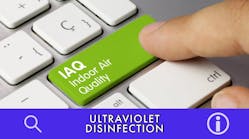INNOVATION | L-Prize Manufacturing & Installation Phase launches, with goal of accessibility to great lighting for all
The Manufacturing & Installation Phase of the L-Prize has launched, putting us closer to the day when innovations sparked by the L-Prize will make their way into real buildings. To recap, the U.S. Department of Energy (DOE) launched the L-Prize competition in 2021 to unlock the full potential of LED technology in public and commercial buildings — such as schools, retail spaces, and offices — where combining high luminaire efficacy with exceptional lighting quality, data-driven control and functionality, and sustainable design and construction can have the most significant positive impact. In 2022, the L-Prize announced four Concept Phase winners, and in 2023, six winners in the Prototype Phase. In all cases, the organizers were astounded by the creative thinking and innovation of those chosen for awards.
The competition has evolved, reflecting the participant questions, feedback, and experience of each phase. After the Concept Phase, we separated the competition into a Luminaire track and a Connected Systems track to offer opportunities for more innovators to compete. Participants could enter the Prototype Phase on one or both tracks, whether or not they had taken part in the Concept Phase.
With the launch of Phase 3, Manufacturing & Installation (M&I), the same guidance applies: Entrants can enter one or both tracks, with no past participation required. This is where it gets real: To be eligible for an L-Prize, luminaires and connected systems must be in production, commercially available, and installed in a building.
This final phase of the competition is scheduled to run for 22 months and offers a $10 million prize pool, divided between up to four winners based on the number of points awarded by an expert review panel. The minimum prize amount for a winner is $1 million.
New points for distinction
The competition’s entry requirements offer multiple paths to success, with bonus points in several categories that support DOE’s commitment to energy efficiency, occupant wellbeing, and resilience in buildings. Judges will look at the Affordability and Value Proposition of the luminaires and connected systems and offer up to 10 bonus points for entries that include impactful innovations to reduce up-front cost, improve the ability of users to afford the product, and/or improve the value proposition of the technology. Up to another 10 bonus points can be awarded to luminaires that include impactful and science-backed innovations to improve the health or wellbeing of building occupants.
In this third phase, we are also offering new requirements and bonus points beyond technical performance and innovation. We want to see U.S. manufacturing content, and a well-designed production and deployment plan. Life-cycle carbon and environmental impacts are a major focus of the competition, and all entries must include a verified life-cycle assessment. We’re looking for things like reduced energy use over the lifetime of the luminaire and extended lifetimes, if possible. We’d like to see reduced use of harmful materials in manufacturing and a decrease in carbon impacts.
We’re also awarding bonus points in the area of Materials and Sustainability Innovation. DOE is looking for examples of improved material health or transparency, where problems or issues with the health impacts of materials were addressed, how these problems or issues were discovered or researched, the solution, and any waypoints that are of interest in the process of arriving at the final solution.
On the Connected Systems track, we are requiring system resilience, where during a loss of connection to the internet, all lighting control strategies (task tuning, scheduling, occupancy sensing, daylight harvesting, and manual control) continue to function in luminaires while associated control devices function in their pre-programmed state prior to loss of connection. For longer power interruptions of up to 48 hours, and upon power reconnection, all lighting control strategies must continue to be implemented by luminaires according to their configuration prior to loss of connection.
Site installation resources
As you can see, the L-Prize design team was ambitious in drafting the rules, and we are calling on all lighting innovators to take up the challenge, enter the competition, or team with an existing entrant. If your building could serve as an installation site, let DOE know! The installation site must not be one of the competitor’s own facilities or directly affiliated with the competitor. The site must be open to visitation by DOE to observe, document, and confirm the installation. And, of course, a location in a building that serves the local community would be welcomed.
DOE recognizes that some entrants may have difficulty finding a host site. To remove this barrier to participation, DOE has created a Resource List to facilitate connections between potential entrants and those interested in serving as host sites. Please visit www.herox.com/LPrize/resources to learn more. I want to encourage all innovators to take part in the L-Prize and become part of the solution as we revolutionize lighting in commercial buildings.
Kate Hickcox, Lighting Research Scientist
KATE HICKCOX joined Pacific Northwest National Laboratory (PNNL) in 2020. She is a creative thinker with over 20 years of experience in lighting, research, and design. Hickcox’s work focuses on sustainability, which means considering the complex aesthetic, technical, visual, and non-visual needs of people while at the same time equitably benefiting the economy, society, and the environment. Her work at PNNL includes supporting Energy Equity and Justice in Systems Technology work, leading decarbonization and circularity efforts for lighting and other mechanical and electrical systems, and work in outdoor nighttime lighting. She has authored or co-authored many technical publications/reports and has presented at LightFair International, IALD, LEDucation, the CIE, and the IES on many topics. Hickcox is currently a member of the IES Standards Committee, member of the ASHRAE Building Decarbonization Whole Life Design Guide working group, Secretary of the IES Technical Committee: Discomfort Glare in Outdoor Nighttime Environments, and a contributing member of the IES Sustainability Committee.





![The DesignLights Consortium continues to make progress in shifting outdoor lighting products and implementation practices toward a more restrained and thoughtful strategy. [Image does not represent a DLC qualified fixture.] The DesignLights Consortium continues to make progress in shifting outdoor lighting products and implementation practices toward a more restrained and thoughtful strategy. [Image does not represent a DLC qualified fixture.]](https://img.ledsmagazine.com/files/base/ebm/leds/image/2024/08/66be810888ae93f656446f61-dreamstime_m_265700653.png?auto=format,compress&fit=&q=45&h=139&height=139&w=250&width=250)
